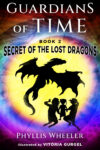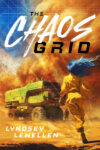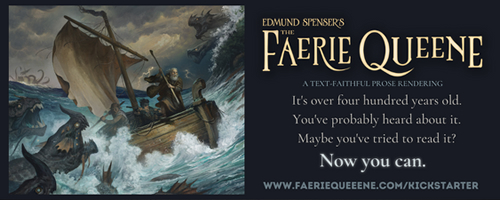It’s The Little Things
So often in the act of world creation it is very easy to focus on the obvious things. Putting together your world’s history. Structuring the geopolitical landscape. Figuring out cultures and climates. And all sorts of other big world ideas. All very important, but I don’t think that’s what makes the world come alive.
I believe that if you want to transition your world from a two dimensional set-piece, to a living breathing world that really draws your readers in, you have to highlight the little details. Show snippets of everyday life. Meander just slightly in order for them to see that there are things happening in the world that have a weight and history to them beyond the scope of your current story’s plot.
Cinematically speaking, think of all the intricate design that Weta Workshops put into the props they made for the Lord of the Rings and Narnia movies. They didn’t just go for the bold strokes that would be obvious to the general movie-goer, but instead put in the craftsmanship to create things as if they were real and were going to be inspected under the microscope.
As an author, you can’t go into that much detail, but you can get the same kind of ideas across by having small interactions, conversations and observations that bring a clearer view of what it is like to live in your world.
It can be a tough balance to strike, as too much little side-descriptions will bog your story down. But if you skip them all together, then I think your world will be painted with too broad a brush and will appear as little more than a backdrop to your story.
What books have you read where you were caught up in the world as much as you were in the story? What was it that sucked you into the world? (And try to skip the usual answers of LoTR/Hobbit and Narnia.)

































More recently I’d say the Temeraire series by Naomi Novik (and Peter Jackson keeps saying he wants to film that one). Because it was alternative history as well as dragon fantasy, there was a huge amount of detail and atmosphere that made the world come alive. Also, I just finished reading The Charlatan’s Boy, and Rogers managed to really paint his world with language. Grady’s voice and vocabulary brought up the scent of wagon wheel dust and the feel of grit. I think Hancock’s “Light of Eidon” series successfully managed to create a world that felt instantly real, with just enough description to make it alive but not enough to distract me: the quiet and seeming serenity of the temple, the squalid city underworld, and the horror of the galley ship a character winds up on. Plus, the mythology of her world, with its varied cultures and specific faiths, made her characters’ actions and dialogue feel grounded and real.
I don’t know if any of you remember or read Outriders by Kathryn Mackel. Now there was a great example of world-building. Mackel managed in a rather short volume to breathe a world to life full of genetic engineering gone amuck, dystopian kingdoms grasping for power, simple folk trying to survive, and a brave group of outsiders trying to fulfill a dangerous mission. She only wrote two books in this series, which my sister and I felt was a real shame. Perhaps she’ll eventually finish that third book she originally planned.
D.M. Cornish’s Foundling, Lamplighter and the forthcoming Factotum feature what is, hands-down, the most intricate and all-encompassing, as well as fresh and intriguing, fantasy world I’ve read since Tolkien. Cornish, originally an illustrator, spent years sketching his world and characters and making notes about them before he ever started to write. And you can tell at once from the vocabulary, the history, and all the little incidental details that go into building up his world that he knows the Half-Continent and loves it, and that what we see in the books is only a small percentage of what’s actually in his head.
Also, he’s a Christian, although the books are published in the general market and do not contain any overt allegory or other obviously Christian content. But when I was reading them I sensed the presence of a Christian moral worldview, which made me intrigued enough to look up some of his interviews and find out that sure enough, yes, he’s a believer. You may be interested in the interview that The Enchanted Inkpot did with him recently — including a question of mine about how Christianity influences his writing — but in any case, I would highly recommend his books.
I’ve only read one of D.M. Cornish’s novels so far (Foundling) but it was very good and I loved its originality. It read like something Charles Dickens might have written had he incorporated steampunk and fantasy elements into his novels. Apparently, Cornish lives in my city. I really should see if I could meet him some day. I’ve just reserved Factotum from the library.
Yes, exactly with the Dickens and the steampunk. Another big influence on Cornish, which I guessed at once, is Mervyn Peake (GORMENGHAST).
But you must read LAMPLIGHTER before you read FACTOTUM! It has the most brilliant cliffhanger and I’d hate anyone to miss it!
Gormenghast is 90% descriptive detail!
I’ll say. The first chapter of TITUS ALONE is enough to make anybody’s eyes cross. And yet somehow I found it completely absorbing, even as an impatient teenager.
R.J. Anderson, yes, sorry, I meant that I just reserved ‘Lamplighter’, not ‘Factotum’. They don’t even sound similar!
I tried reading ‘Gormenghast’ in my late teens and really struggled with it being so wordy and morbidly slow. I only got 40 or so pages into the book but even then I’m still able to notice it’s influence on D.M. Cornish’s Monster Blood Tattoo series.
I’d like to give a shout-out to Stephen King’s ‘The Stand’. It portrays a fully-realised post-apocalyptic America. I’ve never been to America, so I don’t know how true the book is to real life, but I felt like I was there, experiencing every little side-street and highway, along with the characters.
I have always enjoyed Terry Brooks, both his Shannara series and Landover series (I have not yet read the Word and the Void series). I especially like the airships in his later books.
David Cornish spoke at Blacktown library during Writers Week some years ago. We don’t normally get interesting stuff thrown at us. I suspect it was a comment on the marginality of speculative fiction. But it was an interesting evening. It was supposed to be all about world building, but I found that the panel didn’t really know much that was helpful. They each knew a lot about the particular world they had built, but gave little help to budding writers about maps, languages and so forth. There are actual resources to help with these available online.
If you look “under” Tolkien’s map of Middle Earth you can see Europe. If you look under Cornish’s map of his corner of a continent you can see southeastern Australia. Cornish seems to live in Adelaide. He was mainly an illustrator. I thought his attempt at a writing system for his language showed that he was not a linguist. For example, he used and e with an accent for the sound in get, shed, bet. This is one of the fundamental sounds of English and any attempt at spelling reform suggests spelling it iwth a plain e.
Where the Map Ends has good pointers to resources for world building. I find that the lack of authenticity of some worlds arises because the writers don’t understand the underlying principles of whatever they are dealing with. I am very occasionally sent a sample of a language by some budding writer. Usually it consists of some combination of letters that are not frequently put together in English. Zeds, gees, aitches seem to be popular. It’s often difficult to know how to pronounce these. Often the writers can’t suggest how a sample sentence would be put together. I suggest they try some simple everyday examples like greetings, directions, requests for food and such.
I think we have a generation of young writers who never learnt the basics of their own language, so can’t imagine their way into something made up. Those who have tackled other languages get by better.
[Continuing after a storm interruption]
A lot of speculative worlds are less technological than the one we live in. In some way that is the attraction. But because of the rate of change the actual experience of older ways of doing things is far less widespread in the community.
Some writers try to create differentness with maths. They might come up with ways of writing numbers. The idea of Roman numerals seems to inspire a lot of imitators. There is a certain clumsiness in using Roman numerals. I know maths teachers who have set students problems of addition or multiplication using Roman numerals. This is muddleheaded. Those societies never did their maths with symbols. They did their counting with some kind of abacus or pebble board or checked tablecloth (the Exchequer). The symbols were only used to write down the result. Humans have been using calculators for a long time. It is only recently that these have become electronic.
Festivals and special days are another area which seems to inspire a complete lack of imagination. Many spculative worlds are without them. That’s improbable. It is helpful to be Australian in considering this, because we have seen in our lifetimes how the northern hemisphere celebrations can unravel and be reconstituted.
Ken, I too thought D.M. Cornish was more of an artist than a writer but his writing was better than many published authors.
Your post is interesting but it seems to jump all over the place. What exactly are you trying to communicate?
I too recognised Cornish’s world as being modelled on south-eastern Australia and Tolkien’s Middle Earth as being part of Europe but what’s wrong with that? It’s good to write what you know and having an Australian fantasy helps to avoid many of the Tolkienesque cliches that plague fantasy writings. If you’re an Australian, it’s likely you’re not that familiar with snow and green forests, so why include them? There’s a South Australian author by the name of Sean Williams who avoids these cliches by writing what he knows. He’s written some very good novels – eg. the Books of the Change series. They’re modelled on his childhood memories of the Eyre Peninsula in South Australia. Now, that’s clever. Salt flats, sand dunes, isolated towns – they’re all there to be explored. And best of all, they haven’t been done to death.
Sorry about jumping around. My wife was on playground duty at school. A student chasing a football ran into her and knocked her down an embankment. She broke her left wrist. I’ve been doing a bit of running around since.
The idea of fictional worlds triggers long memories. I’ve been involved in publishing since 1977. I have read a lot of slush. Knowing what gets published is bad enough. Knowing what does not get published is very disheartening. In the early days it was mostly LOTR clones. These days the imitation is much broader, but that is not an improvement.
Most writers who try to create an alternate world do so very badly. Most seem ignorant of any of the useful resources available. Most seem unaware of the the actual makeup of the very world they live in. There has been some improvement over the years. But even 5 years ago when I gave up working in publishing other people’s writing, I was still getting manuscripts based on northern European settings, with the cold regions in the north.
I think my answer to Stuart’s question is that no recent book I’ve read has convinced me that the alterate world was anything more than a fake painted backdrop.
I’m continually drawn to F. W. Faller’s two books, “The Sword For the Immerland King” and “Lonoma’s Map”. His world-building fascinates me, especially the spiritual elements in them. The details of life are wonderful and fascinating, if a bit slow. I almost never hear other people talking about those books either.
Another great author for world-building is Jeffrey Overstreet–I think, anyway. The history of his worlds and the Houses is something I wish I could come close to in my own novels.
In my own novels, I realized I needed to do a better job of world-building. I’ve noticed the lack of festivals in fantasy fiction, so I’ve come up with several for different groups to celebrate.
Fascinating post, Stuart!
Good discussion.
I’ll throw in J. K. Rowling because I think her world-building was different from typical fantasy, yet nonetheless brilliant for the very reason that Stuart has isolated—she included amazing details.
Her world, for the most part, didn’t require a different language, dress, religion, or special festivals. So how did she create a place that felt so tangibly real and yet so other? She did it with the details, relying a lot on history. She also created a wizardry governance so she used political intrigue too.
But her details were very much the everyday things like how mail was delivered to the students (by owl) and how a team could win a game of quiddich. She gave humorous titles to school books and told the history of Hogwarts through the portraits of past schoolmasters.
For the most part, the details were incorporated into the action, so there weren’t long passages of explanation or description.
Rudyard Kipling’s Jungle Books, and the element that made the world deep and enchanting was language–the rhythms, the poetry, and the ritual in the way the animals talk. Still one of my all-time favourite works of fiction.